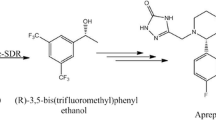Summary.
In contrast to eukaryotic cells certain eubacterial strains have acquired the ability to utilize L-carnitine (R-(–)-3-hydroxy-4-(trimethylamino)butyrate) as sole source of energy, carbon and nitrogen. The first step of the L-carnitine degradation to glycine betaine is catalysed by L-carnitine dehydrogenase (L-CDH, EC 1.1.1.108) and results in the formation of the dehydrocarnitine. During the oxidation of L-carnitine a simultaneous conversion of the cofactor NAD+ to NADH takes place. This catabolic reaction has always been of keen interest, because it can be exploited for spectroscopic L-carnitine determination in biological fluids – a quantification method, which is developed in our lab – as well as L-carnitine production.
Based on a cloned L-CDH sequence an expedition through the currently available prokaryotic genomic sequence space began to mine relevant information about bacterial L-carnitine metabolism hidden in the enormous amount of data stored in public sequence databases. Thus by means of homology-based and context-based protein function prediction is revealed that L-CDH exists in certain eubacterial genomes either as a protein of approximately 35 kDa or as a homologous fusion protein of approximately 54 kDa with an additional putative domain, which is predicted to possess a thioesterase activity. These two variants of the enzyme are found on one hand in the genome sequence of bacterial species, which were previously reported to decompose L-carnitine, and on the other hand in gram-positive bacteria, which were not known to express L-CDH. Furthermore we could not only discover that L-CDH is located in a conserved genetic entity, which genes are very likely involved in this L-carnitine catabolic pathway, but also pinpoint the exact genomic sequence position of several other enzymes, which play an essential role in the bacterial metabolism of L-carnitine precursors.
Similar content being viewed by others
Author information
Authors and Affiliations
Corresponding author
Rights and permissions
About this article
Cite this article
Uanschou, C., Frieht, R. & Pittner, F. What to Learn from a Comparative Genomic Sequence Analysis of L-Carnitine Dehydrogenase. Monatsh. Chem. 136, 1365–1381 (2005). https://doi.org/10.1007/s00706-005-0331-x
Received:
Accepted:
Published:
Issue Date:
DOI: https://doi.org/10.1007/s00706-005-0331-x




